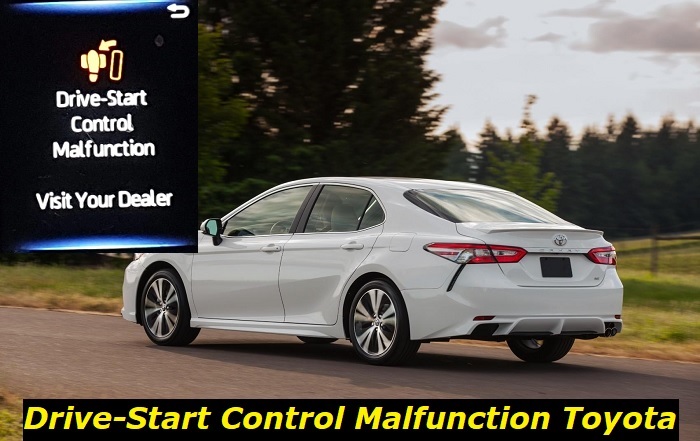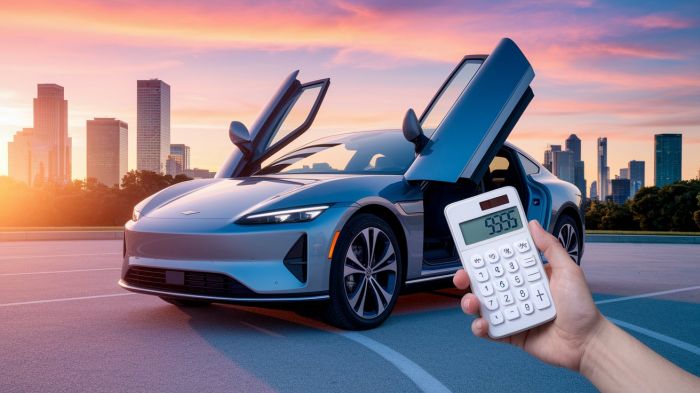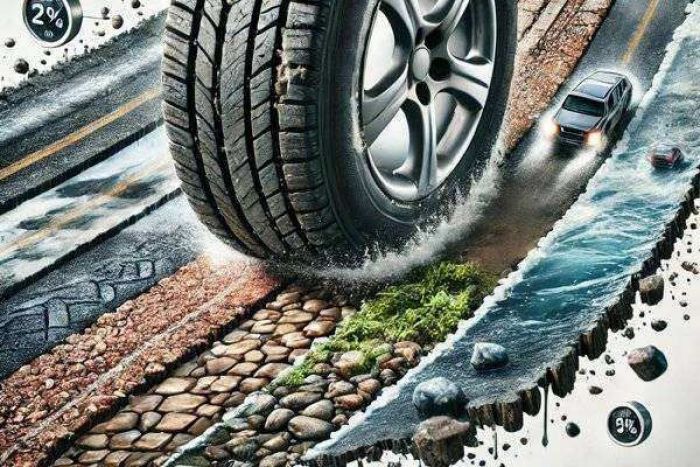The Drive-Start Control (DSC) feature of Toyota vehicles is a very useful addition, especially in terms of safety. However, it is not entirely foolproof as we have encountered numerous complaints about the system.
Drive start control malfunction message highlights
- Common reasons:12V battery issues, electronic glitch, various sensors faulty
- How to fix:check the battery, disconnect the battery for some time, read the codes
- Possible consequences:car may not start
- Priority level:High
- Can you drive?Yes, if it starts
- DIY repair:Impossible
- Repair price range:$150-$500

How Does the Toyota Drive-Start Control Work?
If you currently own any of the latest models of Toyota, then you may already be familiar with this feature. But for those who are unfamiliar with it, here's a quick recap of what it does.
The Drive-Start Control system is just one of the many ways that Toyota is working to prevent unintended accelerations in order to make driving safer, easier, and more enjoyable. And it's yet another example of the famous Japanese brand's commitment to innovation and technology.
This is particularly helpful while you are maneuvering in the parking lot or in the garage. Its main purpose is to mitigate the chances of collisions in the said areas.
Using the data collected from your vehicle's onboard sensors, which is aided by sonar technology, it manages the amount of acceleration or deceleration applied to your auto depending on the presence or positioning of obstacles in its path. It triggers the brakes automatically regardless of how much you are pressing on the gas pedal if it detects obstructions along the way.
The DSC is active whether you are going forward or backward from a total stop.
Common Symptoms of Toyota Drive-Start Control Malfunction
The most obvious symptom of a Toyota Drive-Start Control malfunction is the warning light on your dash. However, it could also be linked to a plethora of other problems in your vehicle so it may come with a combination of one or more symptoms. The occurrence of an additional symptom will give you more useful hints as to where the issue is possibly originating.
Usually, the Toyota DSC fault comes with a sudden and unexpected drop in power. This can be extremely dangerous, as it can lead to loss of control of the vehicle. Other symptoms include the vehicle stalling or running rough.
If you think that your Toyota Drive-Start Control may be malfunctioning, it is important to have it checked out by a qualified mechanic as soon as possible. Waiting too long to get the problem fixed can result in further damage to your vehicle, and can even put your safety at risk. Should you wish to fix the problem yourself though, the next part will run you over the things you have to do to diagnose and repair the issue.
Diagnosing and Fixing the Toyota Drive-Start Control Malfunction
The Drive-Start Control is governed by your Toyota vehicle's onboard sensors, computer box, and other electrical components. Any part of your engine that has to do with acceleration or deceleration can be an indirect culprit, too. However, the former is mostly the common cause of the problem, so here are the parts where you should begin your diagnosis if you are facing any of the aforementioned symptoms linked to the Toyota DSC error.
1. Wiring Problem
Most Toyota owners who have encountered a Drive-Start Control malfunction have traced the root of the problem to the electrical wiring of their vehicle. An issue with the wiring can cause the system to malfunction and cause your car to stall or become difficult to start. Luckily, there are a few things that you can do to fix this problem.
First, check all of the connections and make sure that they are attached properly. If they are loose, tighten them up. Inspect the connectors for any sign of soot or grime, too, and remove them accordingly using a soft cloth. Replace any worn or shorted connector or wiring that you will encounter along the way as well.
2. Blown Fuse
If all the wirings in your auto are okay, you'll need to check the fuses associated with the Drive-Start Control system. These fuses are located in the under-hood fuse box and are labeled as "DSC" or "DRIVE START CONTROL." If any of them are blown or emitting a faint burnt smell of plastic, replace them with new ones of the same amperage.
3. ECU Error
Fixing an ECU error that's triggering the Toyota Drive-Start Control malfunction is relatively easy to do yourself. All you need is a few tools and some basic knowledge of cars and electronics. With that said, let's jump right in and take a look at what you need to do.
Once you've checked the fuses and wiring, it's time to move on to the ECU itself. The first thing you'll want to do is check all of the input and output signals going to and from the ECU. This can be done with a multimeter.
If everything checks out, then the next step is to check the ECU's ground connection. The best way to do this is to use a voltmeter to check for continuity between the ground terminal and a good ground point on the car. If there is no continuity, then the ground connection is most likely the issue. Again, look for any busted components that call for a replacement.
Another possibility is that the software itself needs to be reset. This can be done by flashing the ECU, which can be quite a breeze if you know the basics.
If you're experiencing DSC issues, the first thing you should do is check the ECU for any stored codes using a scanner. These codes can tell you if there's an issue with the sensors or other components of the system. If there are no codes stored in the ECU, then it's likely that a simple reset will fix the problem.
To flash the ECU, you'll need to connect it to a laptop or desktop computer. Once it's connected, you'll need to download and install the appropriate software. Once the software is installed, you'll simply need to follow the prompts to flash the ECU. In most cases, the entire process will only take a few minutes.
Resetting the ECU is a rather simple process that can often fix issues with the Drive-Start Control system. If this doesn't solve your problem, then there may be an issue with a sensor or another component of the system.
4. Faulty Sensor
If your Toyota's Drive-Start Control system is still not functioning properly after flashing the ECU, then there may be an issue with one of the sensors.
When the Toyota DSC malfunctions, it is often due to a problem with one of the sensors that trigger the system. These sensors are located on the front and rear wheels, and they work by detecting changes in wheel speed and rotation. If one of these sensors is not working properly, it can cause the DSC to malfunction.
There are two main types of sensors that can trigger the DSC: ABS sensors and traction control sensors. ABS sensors are located on the front and rear wheels, and they work by detecting changes in wheel speed and rotation. Traction control sensors are located on the rear wheels only, and they work by detecting changes in tire slip.
If you suspect that one of the sensors is causing the DSC to malfunction, you can replace it yourself. Replacing a sensor is a relatively simple process, and it can be done in a few minutes with basic tools. To replace a sensor, you will need a few tools such as a ratchet and socket set, a Phillips head screwdriver, and a flat head screwdriver.
First, locate the sensor that you want to replace. In most vehicles, the sensors are located behind the wheels. Once you have found the sensor, use the ratchet and socket set to remove the bolts that hold it in place. Then, disconnect the electrical connector from the sensor.
Next, take the new sensor and connect it to the electrical connector. Then, bolt the new sensor into place. Make sure that the bolts are tight so that the sensor does not come loose. Finally, test the DSC system to make sure that it is working properly.
If you are not sure which sensor is causing the DSC to malfunction, you can usually find a diagram in the owner's manual that will show you where the sensors are located.
5. Drive-Start Control Problem
If the problems persist after applying all the possible solutions enumerated here, you may need to replace the entire Drive-Start Control unit. This is best done by a qualified mechanic.
Conclusion
As seen here, the methods to diagnose and fix the common causes of the Drive Start Control malfunction in Toyota vehicles are mostly easier said than done. These can be made more complicated if coupled with engine-related problems. Therefore, we highly advise employing the help of a qualified mechanic as you explore a solution for this issue to increase your chances of zeroing into its root, and provide the most appropriate repairs for it.
About the authors
The CarAraC research team is composed of seasoned auto mechanics and automotive industry professionals, including individuals with advanced degrees and certifications in their field. Our team members boast prestigious credentials, reflecting their extensive knowledge and skills. These qualifications include: IMI: Institute of the Motor Industry, ASE-Certified Master Automobile Technicians; Coventry University, Graduate of MA in Automotive Journalism; Politecnico di Torino, Italy, MS Automotive Engineering; Ss. Cyril and Methodius University in Skopje, Mechanical University in Skopje; TOC Automotive College; DHA Suffa University, Department of Mechanical Engineering






Add comment